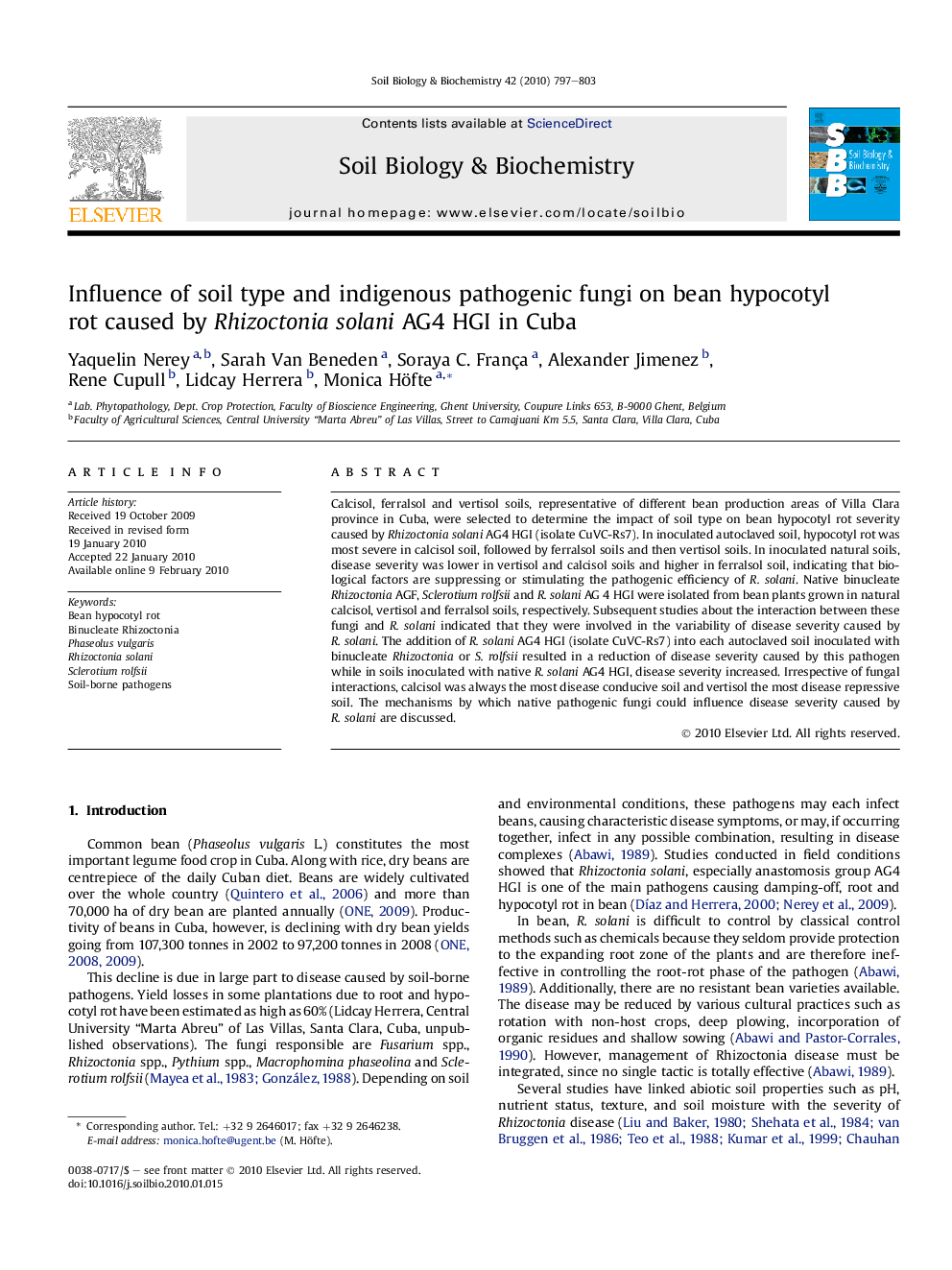| Article ID | Journal | Published Year | Pages | File Type |
|---|---|---|---|---|
| 2024967 | Soil Biology and Biochemistry | 2010 | 7 Pages |
Abstract
Calcisol, ferralsol and vertisol soils, representative of different bean production areas of Villa Clara province in Cuba, were selected to determine the impact of soil type on bean hypocotyl rot severity caused by Rhizoctonia solani AG4 HGI (isolate CuVC-Rs7). In inoculated autoclaved soil, hypocotyl rot was most severe in calcisol soil, followed by ferralsol soils and then vertisol soils. In inoculated natural soils, disease severity was lower in vertisol and calcisol soils and higher in ferralsol soil, indicating that biological factors are suppressing or stimulating the pathogenic efficiency of R. solani. Native binucleate Rhizoctonia AGF, Sclerotium rolfsii and R. solani AG 4 HGI were isolated from bean plants grown in natural calcisol, vertisol and ferralsol soils, respectively. Subsequent studies about the interaction between these fungi and R. solani indicated that they were involved in the variability of disease severity caused by R. solani. The addition of R. solani AG4 HGI (isolate CuVC-Rs7) into each autoclaved soil inoculated with binucleate Rhizoctonia or S. rolfsii resulted in a reduction of disease severity caused by this pathogen while in soils inoculated with native R. solani AG4 HGI, disease severity increased. Irrespective of fungal interactions, calcisol was always the most disease conducive soil and vertisol the most disease repressive soil. The mechanisms by which native pathogenic fungi could influence disease severity caused by R. solani are discussed.
Keywords
Related Topics
Life Sciences
Agricultural and Biological Sciences
Soil Science
Authors
Yaquelin Nerey, Sarah Van Beneden, Soraya C. França, Alexander Jimenez, Rene Cupull, Lidcay Herrera, Monica Höfte,
